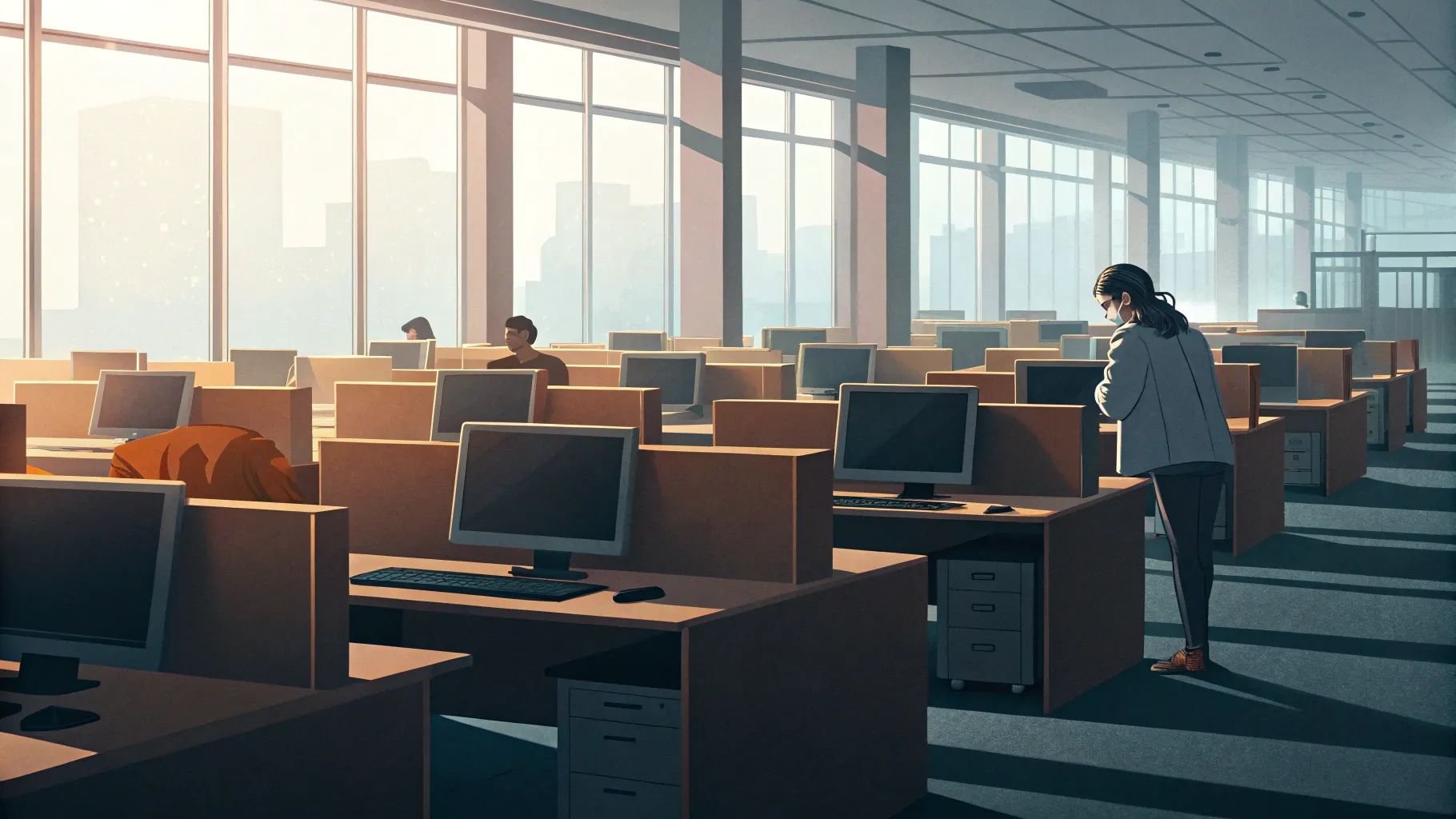The conversation around artificial intelligence often conjures images of robot uprisings and mass unemployment. But the reality of AI’s impact on our workforce is far more subtle and potentially more insidious. It’s not about machines suddenly taking over entire industries overnight. Instead, we’re facing a gradual erosion of job roles that may go unnoticed until it’s too late.
What struck me most about Erin’s recent discussion is her point that “AI doesn’t need to replace your entire job to disrupt your career. It only needs to replace the parts that make you valuable.” This insight cuts to the heart of the issue many workers will face in the coming years.
The Silent Job Killer
Companies won’t make dramatic announcements about replacing workers with AI. There won’t be headlines about mass layoffs attributed directly to artificial intelligence. Instead, positions will simply vanish through attrition. When someone leaves a role, that position might not be filled again. Tasks will be redistributed, automated, or handled by AI systems.
This quiet transformation means we might not recognize the shift until it’s well underway. I believe this stealth factor makes AI’s impact on employment particularly challenging to address through policy or public discourse.
Partial Replacement: The Real Threat
According to Erin, only about 1% of jobs can be completely replaced by current AI technology. But that statistic masks the true scope of the challenge. The real disruption comes from partial replacement—AI taking over specific tasks that previously required human judgment, creativity, or expertise.
Consider what makes your role valuable to your employer:
- Is it your ability to analyze data and spot patterns?
- Your skill at writing clear, persuasive content?
- Your judgment in making decisions based on complex factors?
Many of these high-value skills are precisely what current AI systems are becoming increasingly capable of handling. When AI can perform these tasks faster, cheaper, and with fewer errors, the unique value you bring to your organization diminishes.
The Age of Augmentation
The immediate future isn’t about replacement but augmentation. Companies will expect employees to incorporate AI tools into their workflows to boost productivity and reduce errors. This shift presents both opportunities and challenges.
On one hand, workers who effectively leverage AI tools may find themselves more productive than ever. On the other hand, this transition will likely lead to fewer people being needed to accomplish the same amount of work.
The skills that will remain valuable are those that complement rather than compete with AI capabilities:
- Human connection and emotional intelligence
- Creative problem-solving in unpredictable situations
- Ethical judgment and critical thinking
- The ability to effectively direct and collaborate with AI systems
I’ve observed that many professionals are focusing on the wrong question. Instead of asking “Will AI take my job?” we should be asking “Which parts of my job are vulnerable to AI, and how can I shift my focus to areas where humans still hold the advantage?”
Preparing for the Shift
The gradual nature of this transformation gives us time to adapt, but only if we recognize what’s happening. Workers need to stay alert to which aspects of their roles could be automated and continuously develop skills that remain uniquely human.
Companies have a responsibility too. Transparent communication about how AI tools are being integrated into workflows helps employees prepare for changes. Training programs that help workers develop complementary skills can ease the transition.
The coming years will require all of us to become more adaptable than ever. Those who view AI as a tool to enhance their capabilities rather than a threat to their livelihood will be better positioned to thrive. But we must also acknowledge that not everyone will be able to make this transition easily, and social safety nets may need strengthening.
The AI revolution won’t arrive with dramatic fanfare. It’s already here, quietly reshaping our work lives task by task. Our best defense is awareness and proactive adaptation to ensure we remain valuable in an increasingly automated world.

